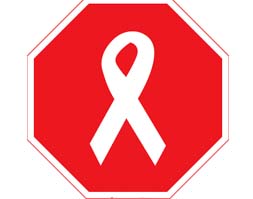Efectividad de la eliminación de transmisión vertical de VIH en un centro de salud en Mozambique
Palabras clave:
SÍNDROME DE INMUNODEFICIENCIA ADQUIRIDA, TRANSMISIÓN VERTICAL DE ENFERMEDAD INFECCIOSA/prevención & control, MUJERES EMBARAZADAS.Resumen
Introducción: el síndrome de inmunodeficiencia adquirida constituye un grave problema de salud, sobre todo, para los países en vías de desarrollo.
Objetivo: constatar si la estrategia de eliminación de la transmisión vertical disminuyó el riesgo de transmisión vertical del SIDA de acuerdo a las metas de la OMS.
Método: se realizó un estudio longitudinal retrospectivo en un centro de salud de la ciudad de Tete, Mozambique. Fueron comparados dos grupos, las mujeres que siguieron y las que no siguieron la eliminación de la transmisión vertical. Para las varibles categorizadas se utilizó el test de X2 y Odds ratio.
Resultados: la media de edad de las gestantes fue de 25,2 años. La gravidez fue más frecuente en mujeres con nivel de escolaridad de enseñanza secundaria general. Del total de grávidas solo el 37,4 % aceptó y siguió completamente la eliminación de la transmisión vertical. Con ésta, solo el 7,6 % de los recién nacidos resultó VIH+.
Conclusiones: se evidenció la efectividad de la eliminación de la transmisión vertical, aunque sus resultados están lejos de alcanzar los objetivos propuestos por la Organización Mundial de la Salud.
Descargas
Citas
1. Brooks, Geo F; Carroll, Karen C; Butel, Janet S; Morse, Stephen A e Mie (2012) Microbiologia Médica de Jawetz, Melnick e Adelberg. Editora McGraw-Hill. 25a Edição. Rio de Janeiro
2. Ngemu EK, Khayeka-Wandabwa C, Kweka JE, Choge JK, Anino E and Oyoo-Okoth E. Effectiveness of option B highly active antiretroviral therapy (HAART) prevention of mother-to-child transmission (PMTCT) in pregnant VIH women. BMC Research Notes 2014, 7:52. Disponible en: https://bmcresnotes.biomedcentral.com/articles/10.1186/1756-0500-7-52
3. VanDeusen A, Paintsil E, Agyarko-Poku T and Long EF. Cost effectiveness of option B plus for prevention of mother-to-child transmission of VIH in resource-limited countries: evidence from Kumasi, Ghana BMC Infectious Diseases 2015; 15:130. Disponible en: https://www.ncbi.nlm.nih.gov/pmc/articles/PMC4374181/
4. Cowan JF, Micek M, Cowan J FG, Napúa M, Hoek R, Gimbel S, et al. Early ART initiation among VIH-positive pregnant women in central Mozambique: a stepped wedge randomized controlled trial of an optimized Option B+ approach. Implementation Science 2015, 10:61. Disponible en: https://www.researchgate.net/profile/Sarah_Gimbel/publication/275668523_Early_ART_initiation_among_VIH-positive_pregnant_women_in_central_Mozambique_A_stepped_wedge_randomized_controlled_trial_of_an_optimized_Option_B_approach/links/55786b9f08ae75363755b2c8/Early-ART-initiation-among-VIH-positive-pregnant-women-in-central-Mozambique-A-stepped-wedge-randomized-controlled-trial-of-an-optimized-Option-B-approach.pdf
5. De Schacht C, Lucas C, Mboa C, Gill M, Macasse E et al. Access to VIH prevention and care for VIH-exposed and VIH-infected children: a qualitative study in rural and urban Mozambique. BMC Public Health 2014, 14:1240. Disponible en: https://www.researchgate.net/profile/Sarah_Gimbel/publication/275668523_Early_ART_initiation_among_VIH-positive_pregnant_women_in_central_Mozambique_A_stepped_wedge_randomized_controlled_trial_of_an_optimized_Option_B_approach/links/55786b9f08ae75363755b2c8/Early-ART-initiation-among-VIH-positive-pregnant-women-in-central-Mozambique-A-stepped-wedge-randomized-controlled-trial-of-an-optimized-Option-B-approach.pdf
6. Focà E, Odolini S, Sulis G, Calza S, Pietro V et al. Clinical and immunological outcomes according to adherence to first-line HAART in a urban and rural cohort of VIH-infected patients in Burkina Faso, West Africa. BMC Infectious Diseases 2014, 14:153. Disponbile en: https://www.ncbi.nlm.nih.gov/pmc/articles/PMC3994430/
7. Moodley P, Raveen P, Dhayendre M. Reduction in Perinatal VIH Infections in KwaZulu-Natal, South Africa, in the Era of More Effective Prevention of Mother to Child Transmission Interventions (2004–2012) Journal of Acquir Immune Defic Syndr 2013;63(3):410–415. Disponible en: http://journals.lww.com/jaids/Fulltext/2013/07010/Reduction_in_Perinatal_HIV_Infections_in.22.aspx
8. Callaghan-Koru JA, Nonyane BAS, Guenther T, Sitrin D, Ligowe R et al. Contribution of community-based newborn health promotion to reducing inequities in healthy newborn care practices and knowledge: evidence of improvement from a three-district pilot program in Malawi. BMC Public Health 2013, 13:1052. Disponible en: http://bmcpublichealth.biomedcentral.com/articles/10.1186/1471-2458-13-1052
9. Velasquez C. Características de los conocimientos y prácticas relacionadas a la prevención de la transmisión vertical del VIH/SIDA en gestantes. Centro de la Mujer Peruana Flora Tristán. Universidad Nacional Mayor de San Marcos CEPESJIU. Lima 2006.
10. Chertorivski S, Hernández Ávila M , Ortiz Domínguez M , Martínez Ampudia L , Izazola Licea JA. El VIH en México 2011. Centro nacional para la prevención y control del VIH/SIDA [Internet] 2011. Disponible en: http://www.cenSIDA.salud.gob.mx/descargas/2011/vihSIDAenmexico2011.pdf.
11. Cecchini D, Martinez M, Astarita V, Nieto C, Giesolauro R, Rodriguez C. Prevención de la transmisión vertical del VIH-1 en un hospital público de complejidad terciaria de Buenos Aires, Argentina. Rev Panam Salud Publica. 2011;30(3):189–95.
Disponible en: http://iris.paho.org/xmlui/bitstream/handle/123456789/9464/v30n3a01.pdf?sequence=1&isAllowed=y
12. Bisio F, Masini G, Blasi Vacca E. Effectiveness of a project to prevent VIH vertical transmission in the Republic of Congo. Journal of Antimicrobiology Chemother. 2013 Aug; 68(8): 1862-71. Disponible en: https://academic.oup.com/jac/article-lookup/doi/10.1093/jac/dkt102.
13. Van Lettow M, Bedell R, Landes M, Gawa L, Gatto S et al. Uptake and outcomes of a prevention-of mother-to-child transmission (PMTCT) program in Zomba district, Malawi. 2011, 11:426. Disponible en: http://bmcpublichealth.biomedcentral.com/articles/10.1186/1471-2458-11-426.
14. Thistle P1, Bolotin S, Lam E, Schwarz D, Pilon R et al. Highly active anti-retroviral therapy in the prevention of mother-to-child transmission of VIH in rural Zimbabwe during the socio-economic crisis. Med Confl Surviv. 2011 Jul-Sep; 27(3):165-76. Disponible en: https://www.ncbi.nlm.nih.gov/pubmed/22320015.
15. Veen CA1, van Kasteren ME, Fiedeldeij CA, Kuipers MH, van Dijken PJ et al. Outcomes of prevention of vertical VIH transmission; 15 years of experience in a non-university Neonatal VIH center. Ned Tijdschr Geneeskd. 2014;158(6). Disponible en: https://www.ncbi.nlm.nih.gov/pubmed/24495366

Publicado
Cómo citar
Número
Sección
Licencia
Aquellos autores/as que tengan publicaciones con esta revista, aceptan los términos siguientes:- Los autores/as conservarán sus derechos de autor y garantizarán a la revista el derecho de primera publicación de su obra, el cuál estará simultáneamente sujeto a la Licencia de reconocimiento de Creative Commons que permite a terceros compartir la obra siempre que se indique su autor y su primera publicación esta revista.
- Los autores/as podrán adoptar otros acuerdos de licencia no exclusiva de distribución de la versión de la obra publicada (p. ej.: depositarla en un archivo telemático institucional o publicarla en un volumen monográfico) siempre que se indique la publicación inicial en esta revista.
- Se permite y recomienda a los autores/as difundir su obra a través de Internet (p. ej.: en archivos telemáticos institucionales o en su página web) antes y durante el proceso de envío, lo cual puede producir intercambios interesantes y aumentar las citas de la obra publicada. (Véase El efecto del acceso abierto).


